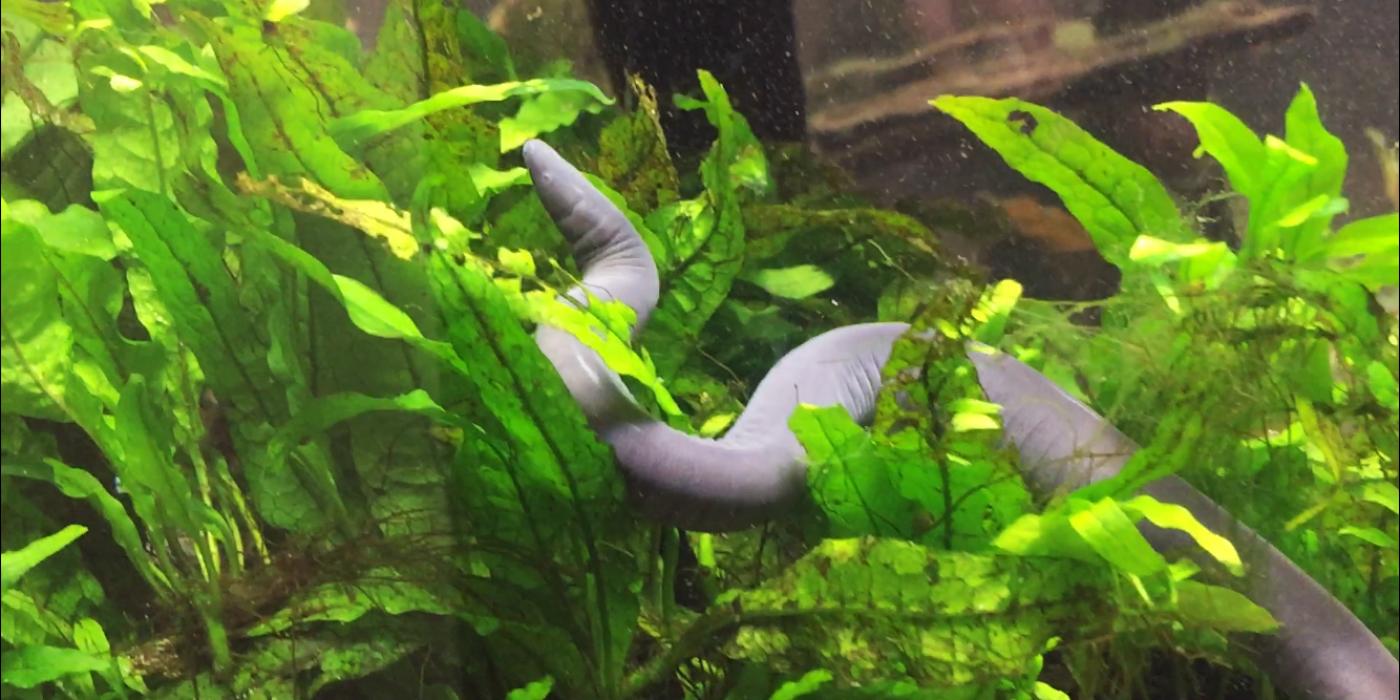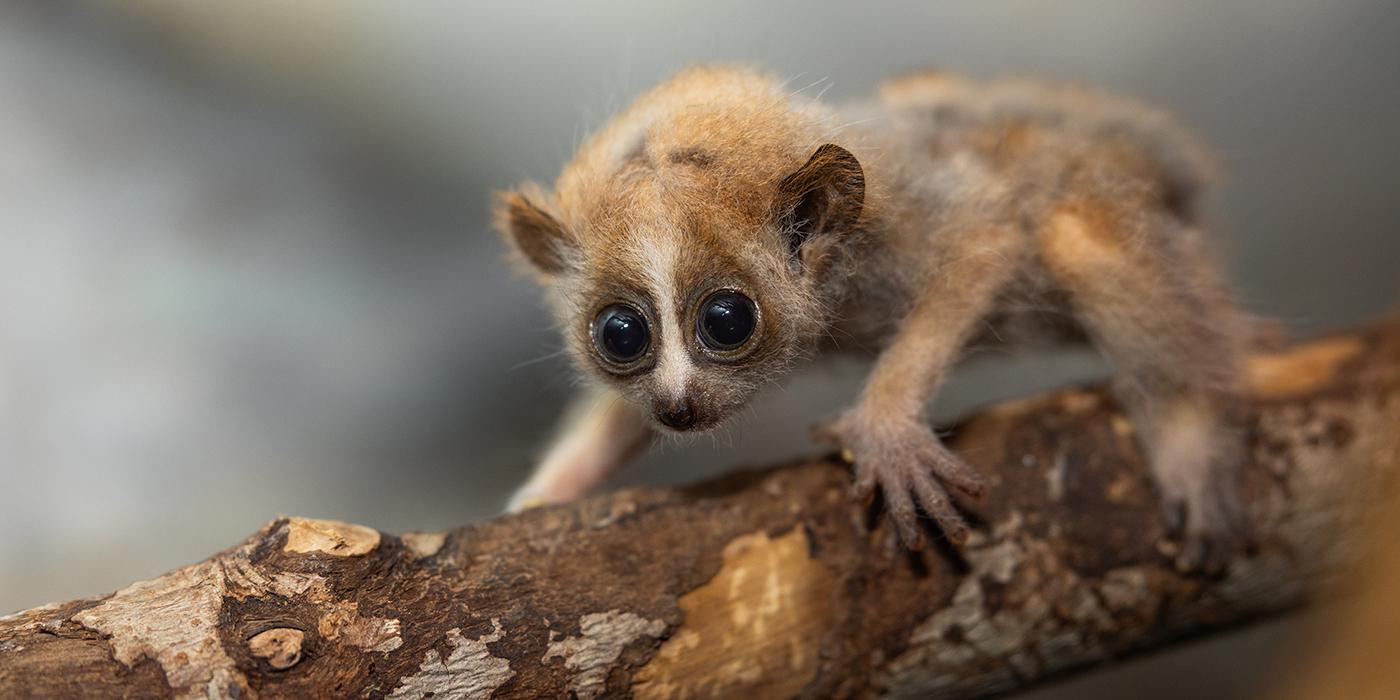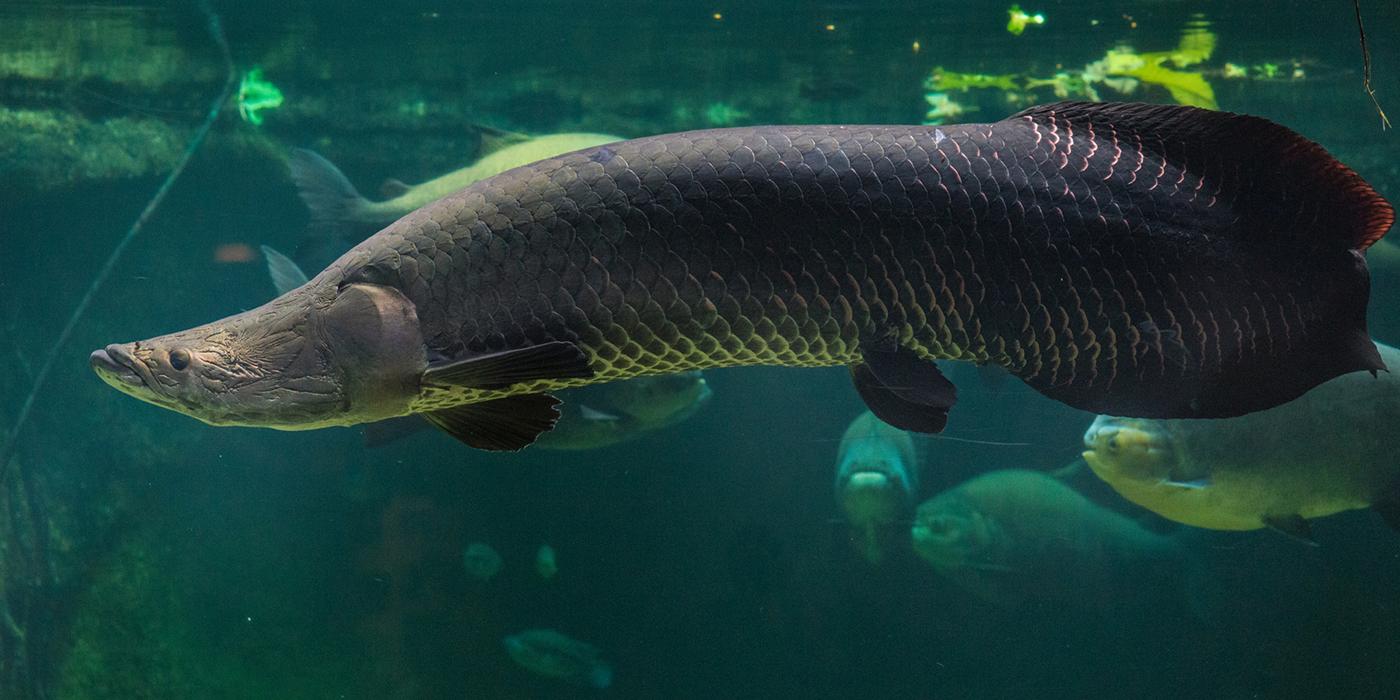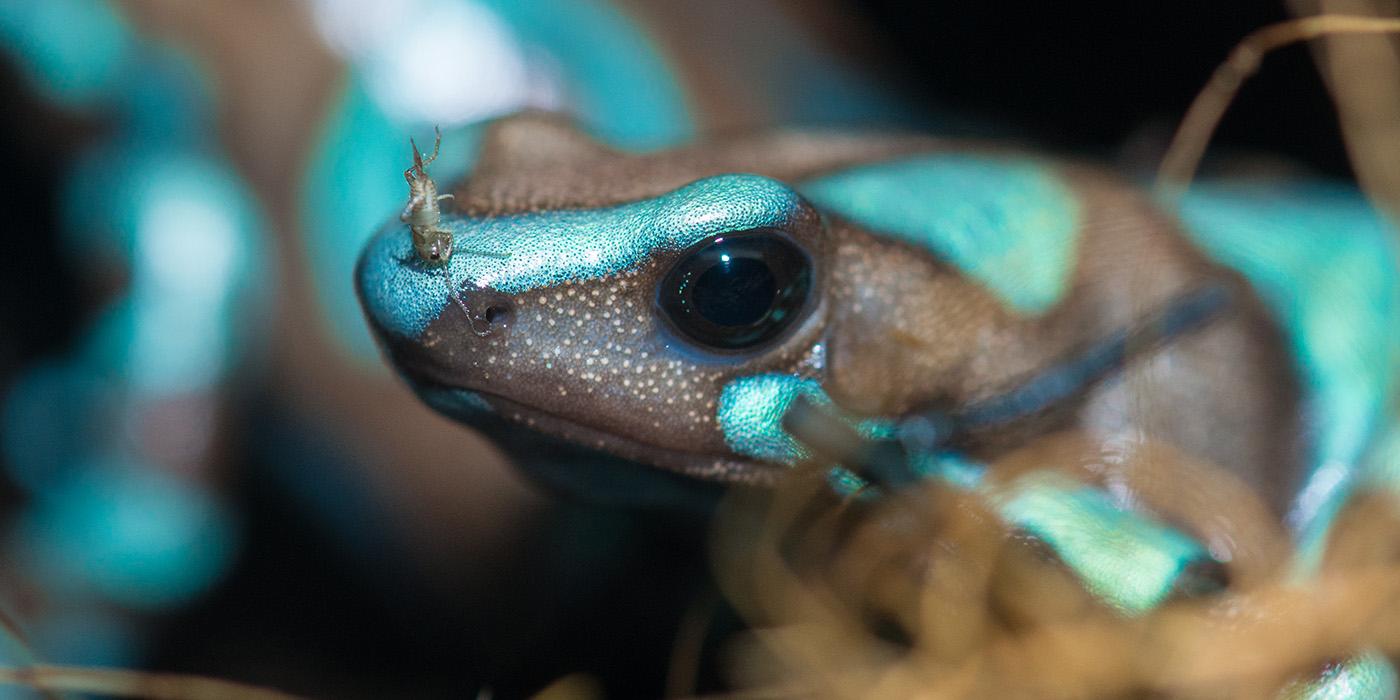New at the Zoo: Wiggly and Wonderful Caecilians
With a sleek, eel-like body and beady eyes, the aquatic caecilian is quite an unusual amphibian. Amazonia recently welcomed four squirmy siblings to the Amphibian Alert exhibit. In this Q&A, animal keeper Denny Charlton shares some of his favorite fun facts and tips for visiting these wiggly wonders.
What do visitors most want to know about aquatic caecilians?
These animals are really interesting and bizarre-looking. They look like a cross between a snake and an eel, but they are neither. Just like frogs and salamanders, caecilians are amphibians. They are native to the Amazon River Basin in South America and spend their entire lives in the water.
What makes caecilians unique?
There are some key differences between caecilians and other species of amphibians. Many amphibians can exchange oxygen through their skin via a specialized membrane, but caecilians do not. Their skin is quite thick, and they must come to the surface to take breaths of air.
Our caecilians are five months old. Since they are juveniles, they take breaths more frequently, about every five to 10 minutes. Adults, however, can hold their breath between 20 to 30 minutes at a time.
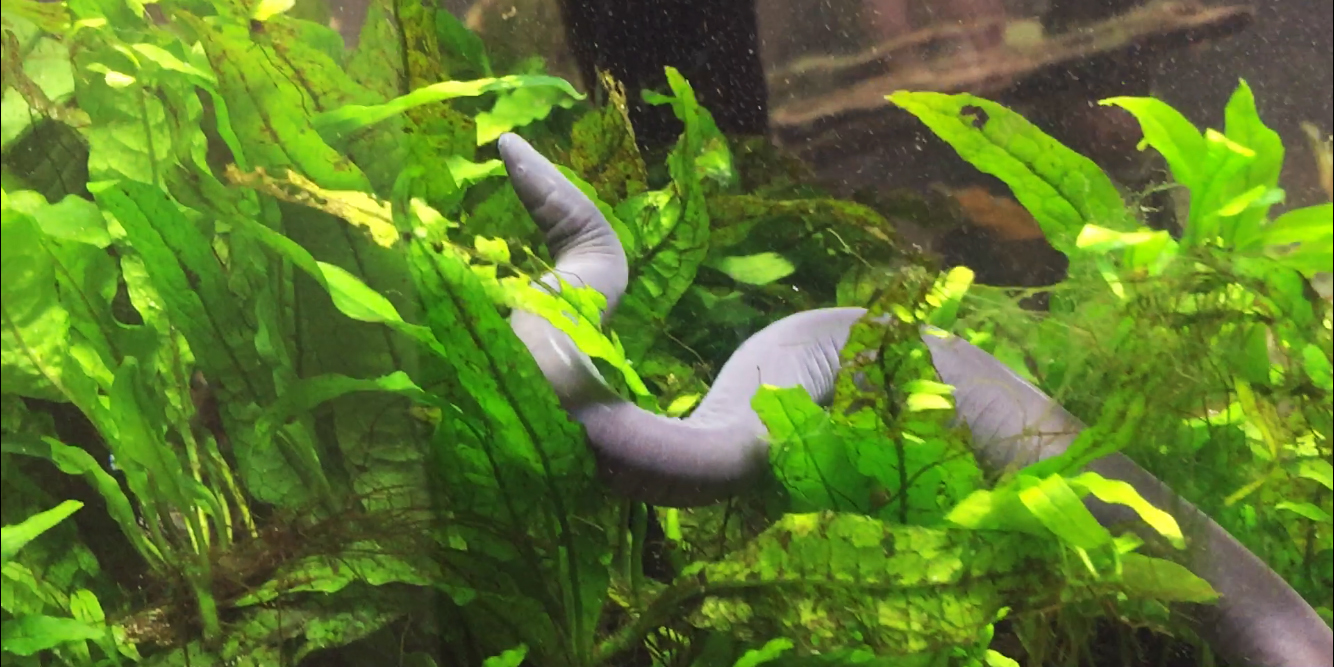
What is your favorite fact about them?
Caecilians have really tiny eyes and do not see very well, so they have adapted to rely on their sense of smell when hunting for prey. We feed them a variety of foods—from mysis shrimp and worms to smelt and other kinds of fish. It can take several minutes for them to find their food; they use their keen sense of smell to zero-in on their prey. In the meantime, they are very active and wiggling around, trying to catch a whiff of their food in the water.
At this age, they are between six and seven inches long. But, when they are adults, they will grow to be one-and-a-half feet long. The dominant caecilians tend to be larger, as they get to eat their fill first. This can result in some tussling between the siblings, but we provide them with enough food that everyone eats until they are satiated.
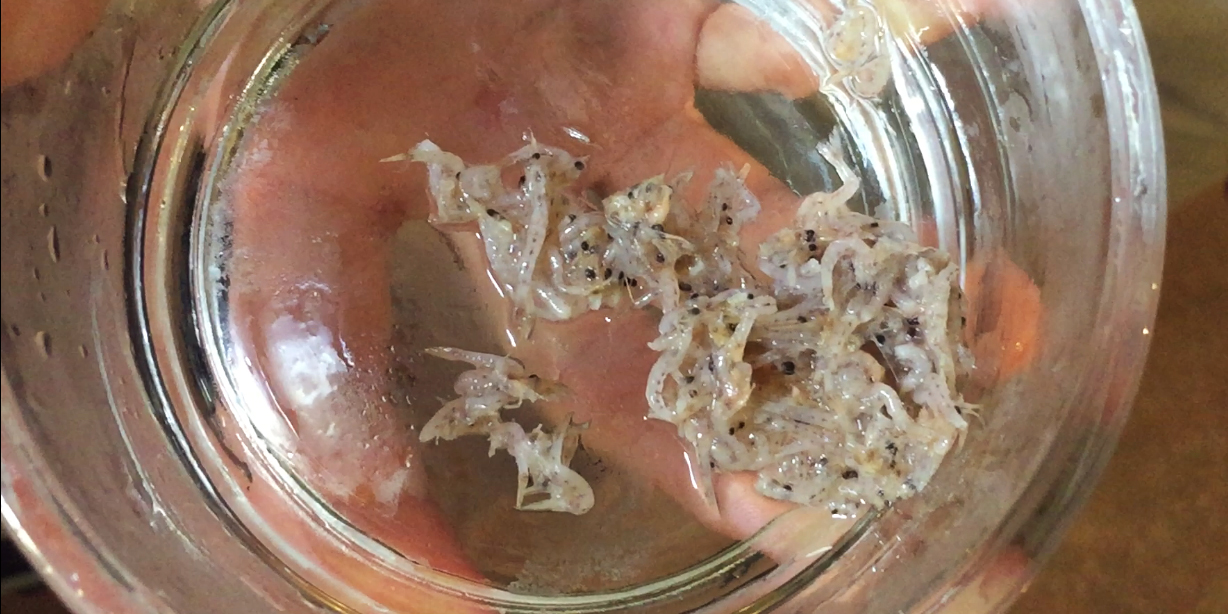
Do our caecilians have a favorite food?
Live black worms seem to be their favorite prey item. These worms live in the water, so they are adept at swimming away or burrowing into the sand. They test the caecilians hunting abilities and keep them occupied throughout the day. Eventually, though, the caecilians get their meal.
We vary the foods that we give them at feeding time so that they experience a variety of tastes and textures. In the wild, caecilians eat a variety of prey as well. As they get older, they also hunt minnows and crayfish.
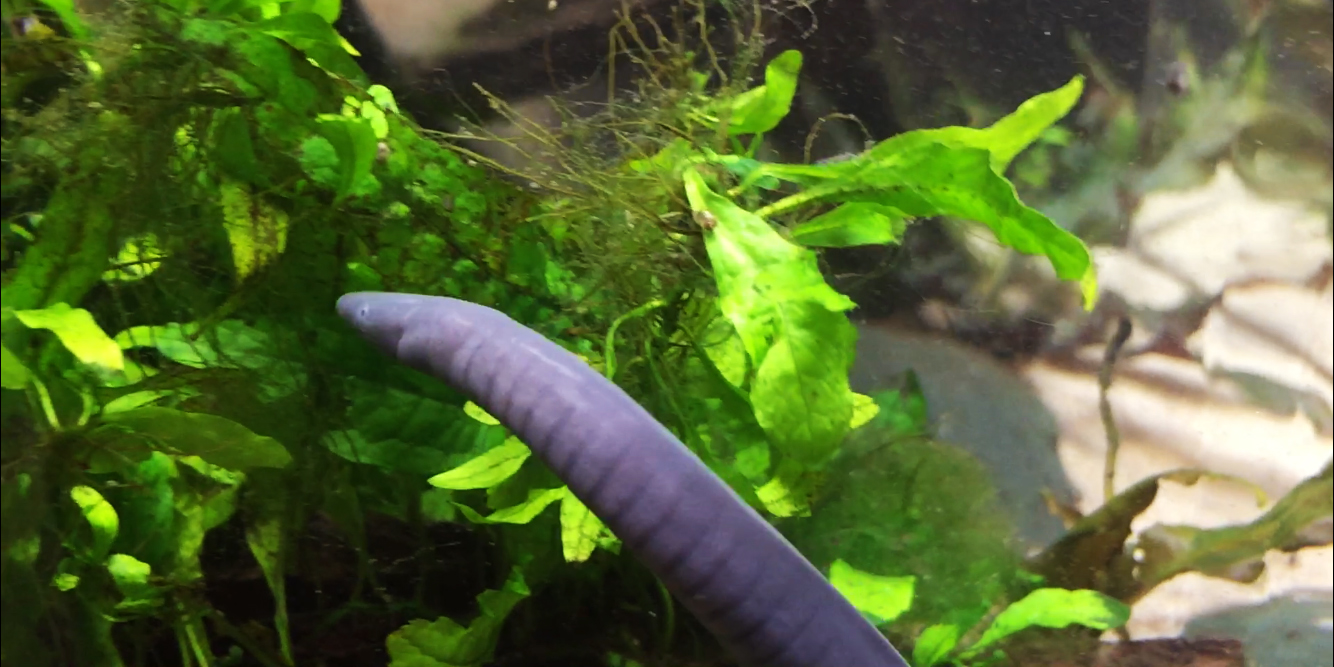
When is the best time to see them on exhibit?
The great thing about this group of caecilians is that they spend a lot of time exploring their habitat and hunting throughout the day. Since we feed them at least four times a week, the odds are that visitors will be able to see them hunt. They are most active before lunch and during their afternoon feeding, which takes place around 2 p.m. Stop by and check them out—they’re really cool animals!
This story was featured in the August 2018 issue of National Zoo News. Every day at 11 a.m. and 1 p.m. meet animal keepers and check out some amazing fish feeding demonstrations at Amazonia.
Related Species:

